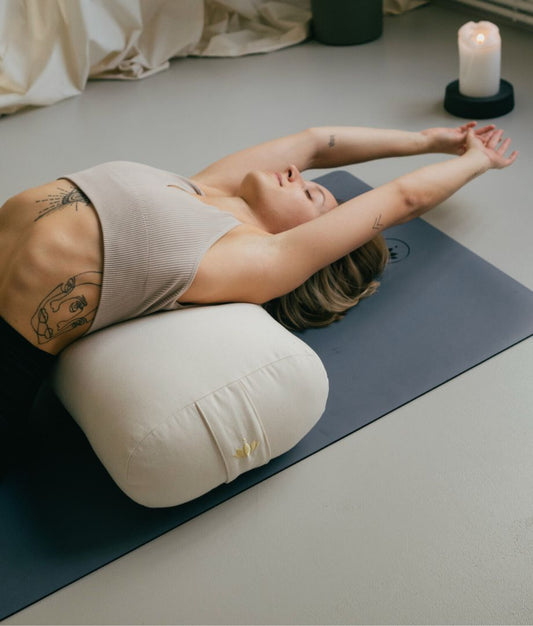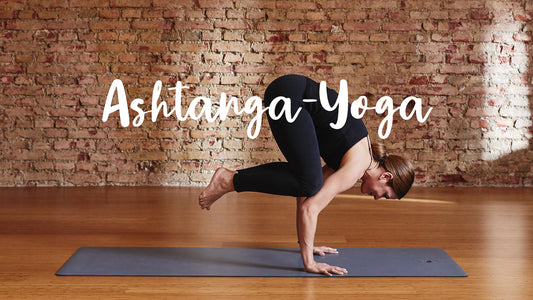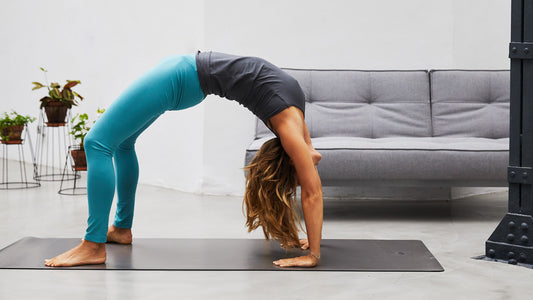
Set-Offers
Save when you buy a set
Shopping cart
Your shopping basket is empty
Yoga

Meditation
Bundles

| Yoga
It is the supreme discipline among yoga styles: Ashtanga yoga. Probably the hardest yoga style, it consists of six series, of which only the first series is often practised over months or years. What Ashtanga yoga actually is, why it is so strenuous and what the Vinyasa Flow is all about, you can find out here!
Ashtanga yoga was made famous by Patthabi Jois, who himself studied yoga in India for many years. In 1960, he described the six series of Ashtanga Yoga for the first time in his book "Yoga Mala", thus founding a yoga discipline that quickly found prominent followers.
Ashtanga yoga is a style that strengthens and shapes the body quickly. But no pain, no gain: the respective series should be practised every day and will make even experienced yogis work up a good sweat.

The asanas of a series are performed always in the same sequence. This, by the way, is one of the major differences to variations of Ashtanga Yoga: In Power Yoga or Jivamukti Yoga, for example, the asanas can be freely combined.
The individual sequences of Ashtanga Yoga can basically be described as Vinyasa Flow. This is because a vinyasa flow is nothing other than the flowing transition of individual postures into one another. This is exactly what is practised in Ashtanga yoga, in a sequence that never changes.
Each of the postures is practised in a sequence that never changes.
Each of the six series in Ashtanga Vinyasa Yoga consists of a fixed number of postures (asanas), each held for exactly five breaths. The rhythm of the breath in combination with the movements is exactly predetermined. During the yoga session, all yogis have the same exercise plan, but the teacher supervises each individual and pays attention to clean execution. This is also necessary, because anyone who ventures into Ashtanga yoga all alone and untrained can easily injure themselves.
However, Ashtanga yoga is not about sweating as much as possible. Instead, students should learn humility, because the demanding asanas are designed to overtax. When you embark on Ashtanga yoga, you have to be prepared to reach your limits or to fail.
In Ashtanga yoga there are six series, all of which build on each other. The first series is practised most often, as it is usually found to be the most difficult: It takes some time to get used to the daily sweaty yoga and the perfect execution of the asanas is no child's play. Those who have mastered the first series progress to the asana sequence of the second and so on.
The first series in Ashtanga Yoga consists of 41 asanas.
Listing them all would take quite a long time, especially as they are to be practised in a fixed order and with a specified breathing rhythm.
Asanas in the first series are, for example, the two warrior poses (Virabhadrasana), the crow (Bakasana) or the boat (Navasana).

All the asanas are announced in Sanskrit and the counting is also done in this language. In this respect, Ashtanga Yoga is also very traditional. As an Ashtanga yogi, you are automatically fully immersed in the yoga teachings - after that, nobody is likely to teach you any better!
The Vinyasa Yoga of the Ashtanga style offers a different approach than the gentle, slow types of yoga offered in many studios: There is no music playing in the background, there are no variations and the sweat is definitely flowing, because the instructor always makes sure that the asanas are performed correctly.
As a beginner, you should definitely do Ashtanga Yoga with guidance. The pace is fast and there are a lot of jumps, so you have to be extremely focused and use your strength at the same time. Without the support of a professional, this can sometimes go wrong.
Ashtanga is considered the most difficult yoga style because you need a lot of patience and discipline. By the way, it is perfectly normal to work on a series for months or even years: Frequent failure and willpower are part of Ashtanga yoga. As a reward, however, experienced Ashtanga yogis report a great feeling after yoga - it's worth the effort!
The description of this yoga style sounds tough, but in the end you can also get a lot out of the sweaty yoga. Because of the fast sequences and the accompanying breathing rhythm you concentrate entirely on yoga and there is no time for brooding, worries and negative thoughts.
In addition, you notice that you are in a state of balance.
You also quickly realise that not everything has to be perfect right away. This is precisely the message that Ashtanga yoga conveys, so that you learn to be more satisfied with yourself. The individual support of your yoga teacher is also an important aspect, as it means that nothing can go wrong and you learn the asanas as they should really be performed.
Not least, Ashtanga yoga shows that yoga is an incredibly versatile discipline in which you can develop a completely new relationship with yourself. This experience alone is worth so much - and even if Ashtanga Yoga isn't your thing, there are still plenty of other styles you can try!
The article Ashtanga Yoga: All about the yoga style and the 6 series originally appeared on Lotuscrafts.

Kundalini, Hatha, Yin, Bikram - the variety of yoga styles can easily overwhelm beginners, especially since one cannot really imagine much under t...
Continue reading
You've probably seen them adorning fabrics, candles and pieces of jewellery: the flower of life is a popular decorative element. However, there is ...
Continue reading
There are no comments yet. Be the first to leave a comment!